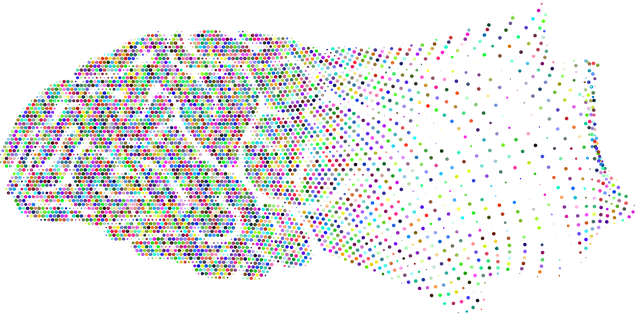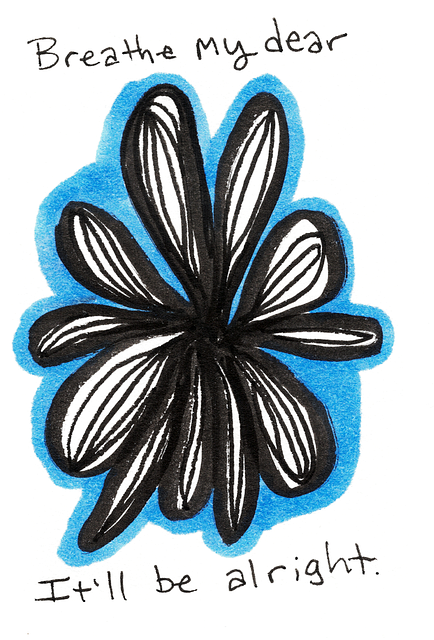Castle Rock Adolescent and Teen Therapy employs targeted public awareness campaigns addressing key challenges faced by teens, including academic pressures, peer influence, and mental health issues. Strategies involve engaging platforms like social media, crisis intervention guidance, and podcast series to destigmatize conversations about mental health. Clear goals, such as raising community awareness and normalizing stress management talks, empower parents and foster open dialogue. Compelling messages through personal stories and self-care practices dispel myths and equip teens with tools for resilience. Leveraging multimedia reaches diverse audiences effectively in today's digital era. Evaluating campaigns using both quantitative and qualitative methods ensures continuous improvement in mental health awareness initiatives.
In today’s digital era, public awareness campaigns play a pivotal role in shaping communities, especially when targeting adolescents and teens like those in Castle Rock who seek therapy. This article guides you through the strategic development of such campaigns. We explore key aspects, from understanding Castle Rock’s adolescent audience to crafting compelling messages and choosing multimedia channels for maximum impact. Additionally, we delve into measuring success through evaluation metrics tailored for public awareness campaigns focused on Castle Rock Adolescent and Teen Therapy.
- Understanding the Target Audience: Adolescents and Teens in Castle Rock
- Defining Campaign Goals: What Change Do You Aim to Bring?
- Crafting Compelling Messages: Strategies for Effective Communication
- Choosing the Right Channels: Multimedia Approaches for Maximum Reach
- Measuring Success: Evaluation Metrics for Public Awareness Campaigns
Understanding the Target Audience: Adolescents and Teens in Castle Rock

In Castle Rock, understanding the target audience of adolescents and teens is paramount for effective public awareness campaigns. This demographic faces unique challenges that can range from academic pressures to peer influence and mental health issues. Tailoring messages to resonate with them requires a deep dive into their world, where concerns about identity formation, social acceptance, and emotional well-being are at the forefront. Campaigns should leverage platforms popular among this age group, such as social media and interactive digital content, to engage effectively.
Focusing on Castle Rock Adolescent and Teen Therapy, crisis intervention guidance can be integrated seamlessly into these campaigns. By promoting positive thinking and mental wellness, adolescents can be empowered to seek help when needed. The Mental Wellness Podcast Series Production is another innovative approach that can deliver evidence-based insights in an accessible format, fostering open conversations about mental health and encouraging proactive measures towards maintaining emotional balance.
Defining Campaign Goals: What Change Do You Aim to Bring?

Defining the goals of a public awareness campaign is a pivotal step in any initiative aimed at effecting positive change. When it comes to Castle Rock Adolescent and Teen Therapy, for instance, setting clear objectives can significantly impact the outcome. The primary goal might be to increase community understanding of adolescent mental health issues, emphasizing that struggles with stress management or self-esteem improvement are not rare but rather common challenges among teens.
This approach could facilitate a more open dialogue about these often-overlooked topics and encourage parents and caregivers to seek support for their children earlier. A well-defined campaign also guides the implementation of effective strategies, such as initiating a community outreach program that educates local schools and community centers on youth mental health resources available, fostering an environment where support is readily accessible and stigma is reduced.
Crafting Compelling Messages: Strategies for Effective Communication

Crafting compelling messages is a key aspect of successful public awareness campaigns, especially when targeting adolescents and teens, as seen in Castle Rock Adolescent and Teen Therapy initiatives. Effective communication strategies can help dispel myths, reduce stigma, and encourage youth to seek support for their mental health. One powerful approach involves sharing personal stories that resonate with the target audience. When teens hear from peers who have successfully navigated challenges like anxiety or stress, it normalizes conversations around mental wellness and fosters a sense of community.
Incorporating self-care practices into campaign messaging is another effective tactic. Promoting simple yet impactful routines for Self-Care Routine Development can empower young individuals to take charge of their mental health. Mindfulness exercises, for instance, have been shown to reduce anxiety and improve overall well-being. By teaching teens the principles of Mind Over Matter, these campaigns equip them with valuable tools to navigate life’s challenges. This proactive approach not only provides immediate relief from Anxiety Relief but also fosters resilience for the long term.
Choosing the Right Channels: Multimedia Approaches for Maximum Reach

In today’s digital era, developing effective public awareness campaigns requires a strategic approach to reach a wide audience. One crucial aspect is selecting the right communication channels, especially when targeting specific demographics like adolescents and teens. Castle Rock Adolescent and Teen Therapy understands this challenge, leveraging multimedia platforms for maximum impact. By combining traditional media with innovative digital strategies, they ensure their messages resonate with younger audiences.
For instance, integrating video content, interactive web resources, and social media platforms can significantly enhance engagement. These channels allow for the delivery of impactful stories, educational videos on topics like mindfulness meditation for anxiety relief, and engaging infographics that simplify complex issues. This multimedia approach not only captures attention but also fosters open dialogue, making it an indispensable tool in public health initiatives aimed at addressing teen mental health concerns.
Measuring Success: Evaluation Metrics for Public Awareness Campaigns

Evaluating the success of public awareness campaigns is paramount to understanding their impact and identifying areas for improvement. Metrics play a crucial role in gauging the effectiveness of these initiatives, especially when aiming to reach and educate a diverse audience. For Castle Rock Adolescent and Teen Therapy or similar organizations promoting mental health awareness, defining success could involve tracking key performance indicators (KPIs) such as campaign reach, engagement rates, and changes in public perception.
One effective evaluation strategy is to employ a combination of quantitative and qualitative methods. Quantitative data can be collected through metrics like website traffic, social media analytics, and survey responses, offering insights into the initial impact. For instance, tracking a surge in online therapy inquiries or increased social media engagement during a campaign period suggests successful outreach. Qualitative feedback from focus groups or individual interviews delves deeper, providing valuable insights into how the campaign resonates with different demographics. This dual approach allows for a comprehensive understanding of public awareness campaigns’ long-term effects, such as fostering better communication strategies and promoting compassion cultivation practices like mood management techniques.
Public awareness campaigns play a pivotal role in educating and inspiring action within communities, especially when targeting adolescents and teens. By understanding specific audiences like those in Castle Rock and defining clear goals, we can craft compelling messages that resonate. Utilizing multimedia channels effectively ensures maximum reach, while rigorous evaluation allows us to measure success and adapt strategies for meaningful impact. For Castle Rock adolescent and teen therapy services, such campaigns have the potential to foster a more informed and supportive environment for young individuals’ mental health and well-being.














